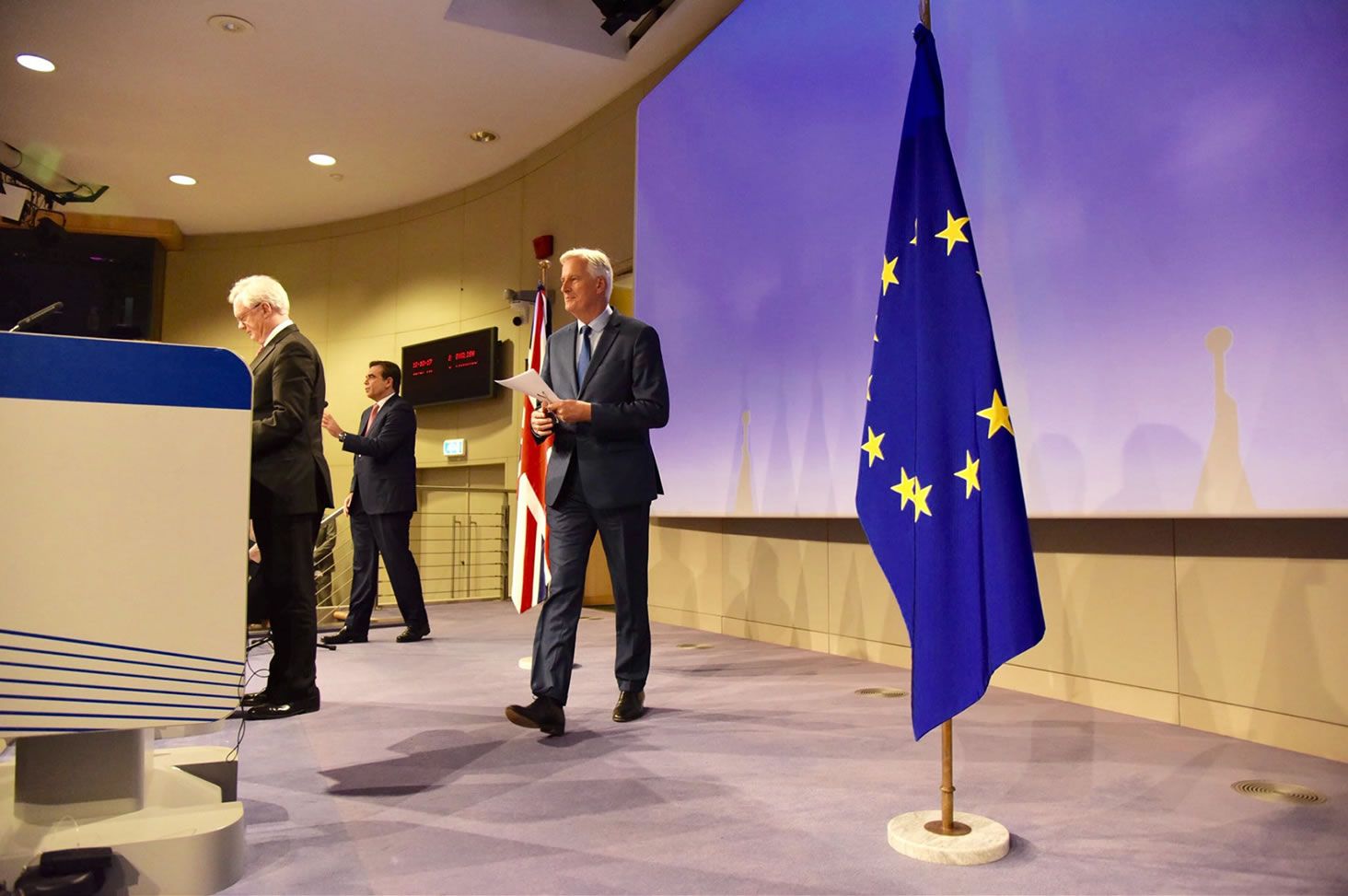Pound's Bullish Bias vs. Australian Dollar Intact: Week-Ahead Predictions

The Pound-to-Australian Dollar looks poised to advance further over coming days with our technical studies confirming the pair remains marginally bullish.
Starting with an analysis of the charts, we note how GBP/AUD has broken above a key long-term trendline suggesting more upside is in store for the pair.
Trendline breaks are clear signs of further bullishness and the exchange rate is now biased to going higher.
We can see the break clearly on the weekly chart below which shows how the exchange rate has been rising in an ascending channel since bottoming last October.
Now it has broken above the trendline and is poised to extend higher.
The usual method for determining how far prices will go after a trendline break is to take the move prior to the break and extrapolate it from the point of the break higher, which suggests a target in the 1.76s.

On the daily chart (see below) we note how the breakout above the trendline was followed by a heavy down-day last Thursday on the day of the Bank of England (BOE) rate meeting.
This has brought the exchange rate back down to the trendline again where it appears to be finding support currently.
This support is likely to be robust and will probably prevent a decline back below the trendline despite the considerable force of last week's down day.
Ultimately, we see an extension higher eventually, with a break above the 1.7370 highs providing confirmation of more upside to an initial target at 1.7500.

There is a possibility it could go even higher to the 1.76s and the upper borderline of the rising channel, but we choose 1.75 because it is a conservative target as it is a major round number which is likely to attract a lot of traders and therefore possibly selling pressure.
Round numbers are focuses of trading activity because people use them as common reference points, as well as entry and exit levels.
Get up to 5% more foreign exchange by using a specialist provider by getting closer to the real market rate and avoid the gaping spreads charged by your bank for international payments. Learn more here.
Events and Data to Watch for the Australian Dollar
The big event in the week ahead for the Australian Dollar is the meeting of the Reserve Bank of Australia (RBA) to decide interest rates on Tuesday morning at 03.30 GMT.
Recent Australian economic data has been poor suggesting the RBA may take a dovish line - which means favouring lower interest rates.
This will probably be bearish for the Aussie as lower interest rates mean a weaker currency since foreign investors are less likely to move their money to somewhere where interest rates are at risk of falling.
The two most disappointing recent releases were for inflation (CPI) and retail sales.
“The CPI print was disappointing in more ways than one,” says Tony Morriss, a rates strategist, and economist at Bank of America Merrill Lynch. “The Bank lacks a narrative to signal an eventual move to a more normal rates structure, at this stage, and front-end rates are set to hold ranges with monetary policy sidelined.”
The RBA has held the cash rate at its record low of 1.5% for 14 months amid concerns over the outlook for inflation and the impact that higher interest rates could have on debt-laden households and the economy.
It now seems likely they will keep them at 1.5% for some time yet, given the poor run of data.
News, Events, and Data for the Pound

Above: Michel Barnier and David Davis. (C) European Commission.
Last week saw the Bank of England (BOE) take the momentous step to raise interest rates for the first time in 10-years.
Yet no sooner had the rate hike been announced that the market moved on to the next topic of discussion, which is whether or not the hike was a one-off or a part of a series.
The main determining factor appears to be Brexit uncertainty - if talks go smoothly the BOE is more likely to raise rates again - if not then they will probably err on the side of caution and leave the one rise until a clearer picture of what post-Brexit Britain will be like emerges.
Remember the rule of thumb is higher interest rates = a stronger Pound.
"We agree that a deal is the most likely outcome, and based on this we believe that market expectations for a cumulative 0.5% of additional interest rate rises by mid-2020 look low. Rather we think the MPC would like to follow a path similar to that of the Federal Reserve, which has raised rates by a cumulative 0.75% since its initial hike in December 2015," says Pimco Analyst Mike Amey.
Brexit negotiations commence once again in the coming week with all eyes turning to Friday's press conference to be hosted by the UK's David Davis and the EU's Michel Barnier for clues on progress.
Markets will want to see signs of progress that will allow the progression of talks from issues surrounding the divorce to that of trade. Of particular concern is the securing of a transitional deal, widely expected to last two years.
Businesses want certainty and the transitional period will be critical to providing the stability required to make investment decisions.
“Given the Government’s ambitious timetable, to agree on a transitional period early next year and the future relationship altogether by next October, it is crucial for the second phase of talks to start in January,” says Andrew Wishart, UK Economist with Capital Economics.
All in all, this is to say that in the week ahead news about Brexit will remain a high priority for currency dealers.
As far as the hard data front goes, it is a relatively quiet week with no tier one releases on the radar.
The first release is the BRC Retail Sales Monitor released just after midnight on Tuesday, November 7.
This will provide an up-to-date snapshot of the most recent retail sales activity.
Next, we have Halifax House Prices out at 08.30 on Tuesday and is followed by the House Price Balance from the Royal Institute of Chartered Surveyors, just after midnight on Wednesday, November 8.
On Friday Industrial and Manufacturing Production data for September is released at 9.30, with the former expected to come out at 0.3% versus 0.2% previously, and later suggesting a 0.3% versus 0.4% previously.
The Trade Balance is released at the same time and is expected to show the deficit narrow to -12.8bn from over -14bn previously.
Get up to 5% more foreign exchange by using a specialist provider by getting closer to the real market rate and avoid the gaping spreads charged by your bank for international payments. Learn more here.




